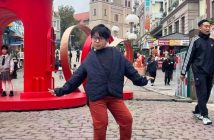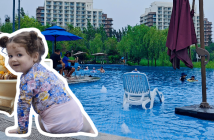(This summer Andrew Killeen traveled around Mongolia with his wife and two children: Noah, 10, and Joseph, 7. In this series of posts, he shares tips and tales from their adventures. Check out part 1, part 2, part 3 and part 4 of the series.)
The culmination of our trip to Mongolia was the national Naadam festival, held in July every year. Naadam simply means “Game”, and smaller events are held all across the country throughout the summer. However the capital’s version is the biggest and most prestigious. We bought tickets via the LG Guesthouse for both days, although with hindsight one day would have been enough.
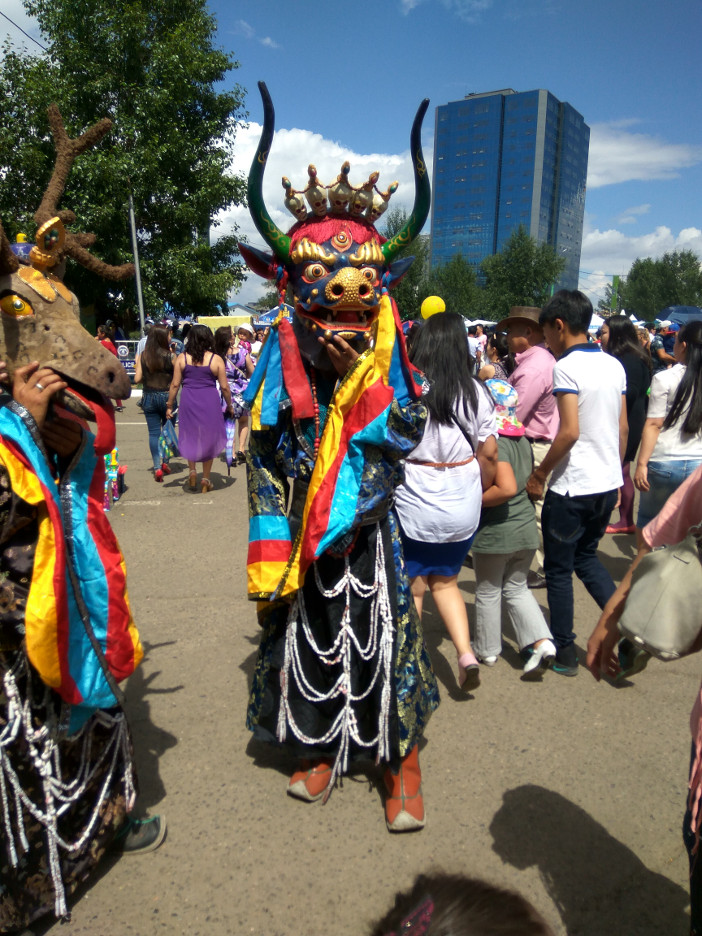
Make sure you go on the first day of the festival, and catch the opening ceremony, a spectacular expression of national pride, featuring dancing, battle recreations, parades in traditional costume, and, when we attended, a celebration of the 35th anniversary of the flight of Mongolia’s first (and to date only) cosmonaut.
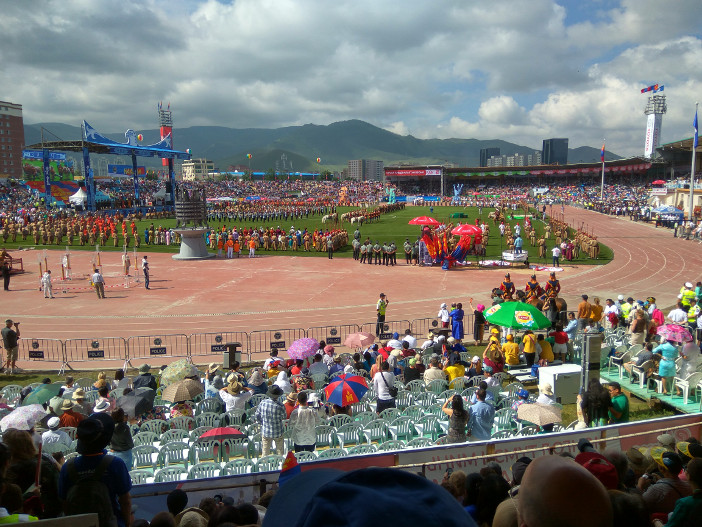
Most of the other westerners disappeared after the ceremony, and we soon discovered why. Mongolian sports are not particularly geared towards spectators, and unless you know the competitors personally (as of course most of the onlookers do), the appeal can be elusive. However it’s fun just to wander around and watch the crowds, participants mingling with spectators, and enjoy the sideshows such as fortune-telling and that old favorite, seeing how long you can hang onto a bar.
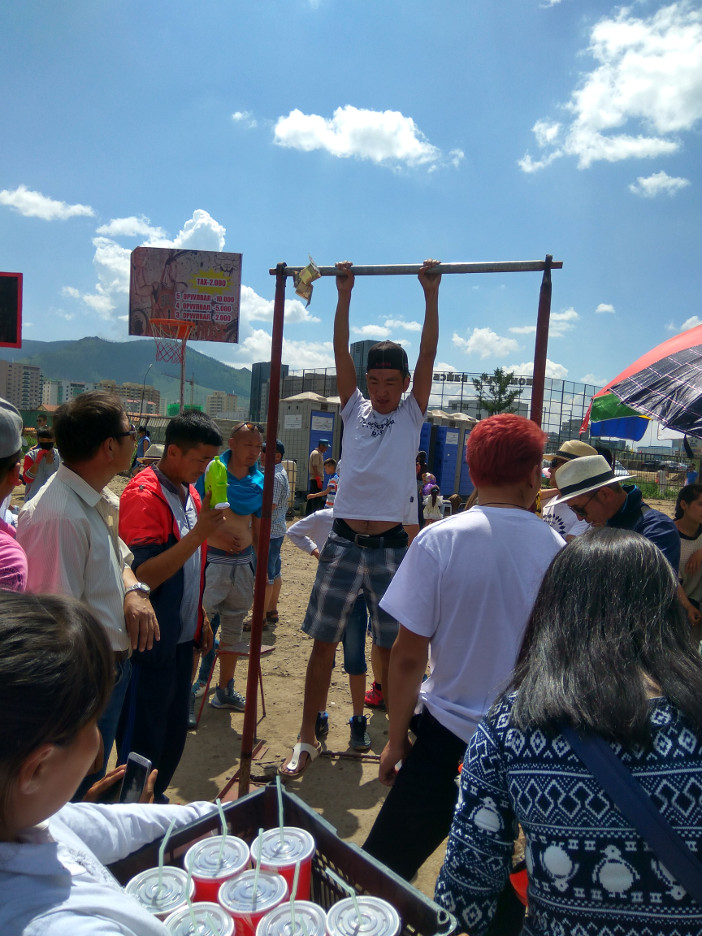
Of the Three Manly Sports central to the Naadam, wrestling is the most dramatic. As with the other events the competitors are not professionals, and are competing for the glory of their hometown or region. However the sport is central to Mongolian culture. Traveling around we frequently saw young men wrestling formally or informally, and it’s not hard to see why Mongolians have come to dominate sumo, to the distress of many Japanese fans.
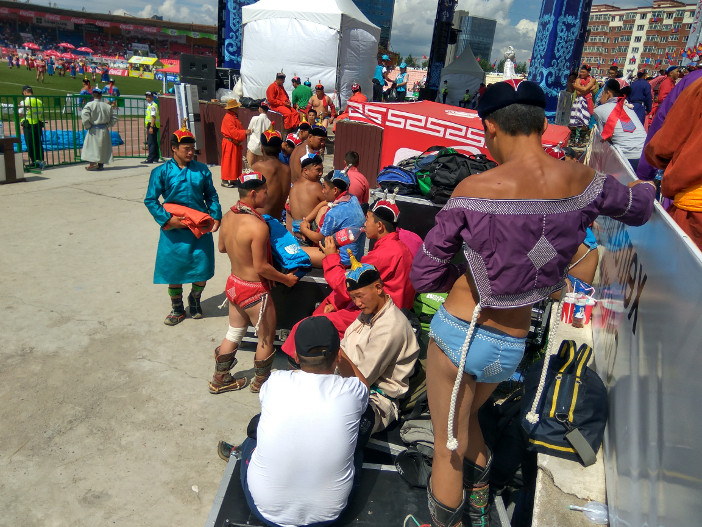
Unlike sumo though there is no ring, and bouts only end when one of the wrestlers is thrown. As a result they can go on for some time, and for the Naadam the officials intervene after 30 minutes to try to force a result. Even so the event was running very late by day two. It’s well worth trying to catch one of the challenge rounds, when the wrestlers line up and their coaches sing a list of their accomplishments, followed by an invitation to the opponent they want to face. While each song is being sung, the wrestler being praised wheels around, arms outstretched like the wings of a falcon.
The second of the Three Manly Sports is archery. The target is a pile of blocks on the ground, and the arrows are blunt – which is just as well, since the judges stand around next to them, indicating the skill of the shot by raising their arms and singing. It’s an impressive sight, but the novelty soon fades.
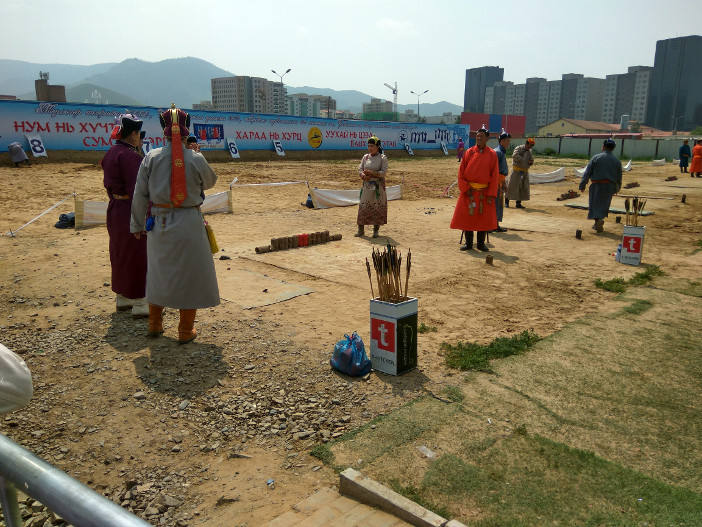
Anklebone shooting is a minor event at the Naadam, but one of the most entertaining to watch. Competitors flick sheep bones at a row of other bones set up on a platform. There are of course traditional songs to celebrate good shots, and shooters will hum to encourage each other.

The third Manly Sport is horse racing, but here I must come clean. We were so exhausted from our adventures that we didn’t make it to the venue, which lies outside the city. A taxi driver refused to take us, saying it was too far, and we were unable to find the bus stop, so in the end we simply gave up. However we weren’t too disappointed, as we’d had a previous encounter with the riders.
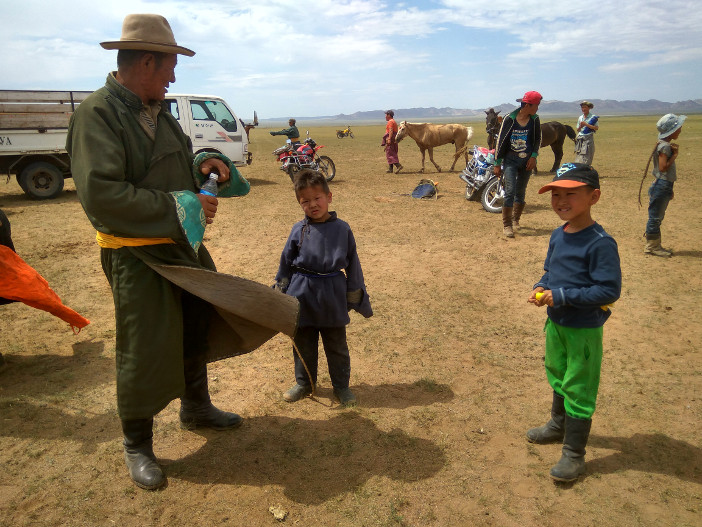
We had been crossing the desert south of UB when we saw trucks and jeeps ahead of us, and asked the driver to take us over to investigate. It became apparent that we had stumbled across a practice session for the Naadam. The jockeys are children, and one local jokingly asked whether Joseph would be competing. While the dads stood around chatting and making bets, the kids saddled up and rode around in a circle, singing an eerie, wordless song. At an unseen signal they all galloped away, and disappeared in a cloud of dust. It remains one of our most magical memories of Mongolia.
Photos: Karen Killeen


